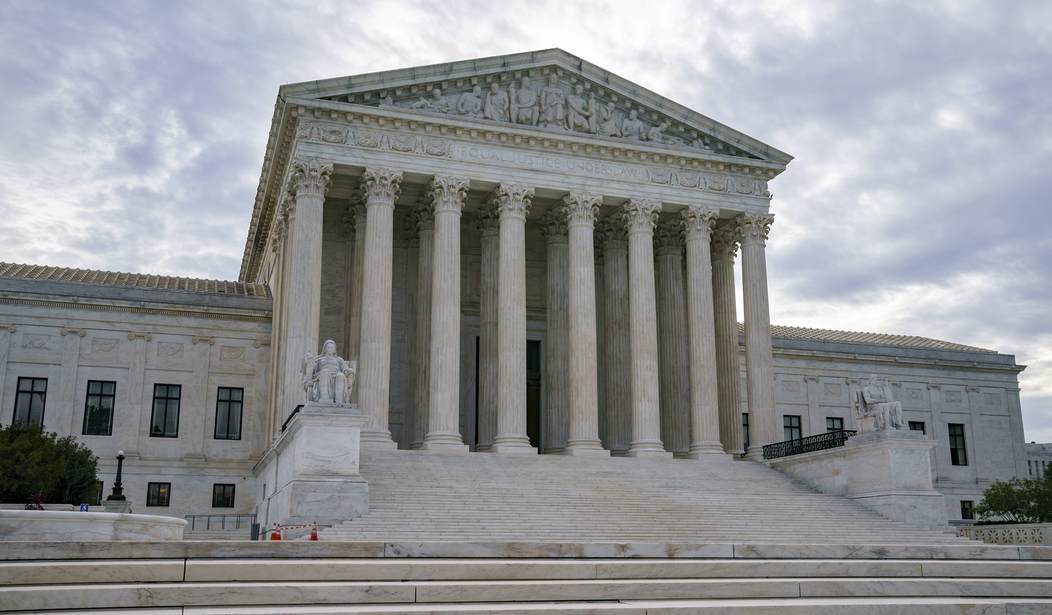Over and over during the Supreme Court’s oral arguments on Wednesday about Mississippi’s new abortion law, Dobbs v. Jackson, those defending abortion argued how any restrictions would endanger women’s health and well-being. The law prohibits abortions after 15 weeks, though it includes exceptions for a woman’s life and health.
For abortion rights advocates the cases was the end of the world. “Nearly half of the states already have or are expected to enact bans on abortion at all stages of pregnancy, many without exceptions for rape or incest,” predicted Biden’s Solicitor General Elizabeth Prelogar during oral arguments. But even Chief Justice John Roberts indicated that he wasn’t buying their rhetoric: “the thing that is at issue before us today is 15 weeks.”
One often misunderstood fact: Legal abortions didn't start with Roe or even with the five states that adopted abortion laws similar to the Roe v. Wade type rules in 1969 and 1970. Prior to Roe, women could have had abortions when their lives or health were endangered. But many states, including some surprising ones, such as Kansas, already had very broad, liberal interpretations of what constituted danger to health. Nevertheless, Roe did substantially increase abortions, more than doubling the rate per live birth in the five years from 1972 to 1977.
Julie Rikelman, an attorney with the Center for Reproductive Rights who also made arguments to the court, claimed that the “studies based actually on causal inference [show] that legalization of abortion and not other changes … had these benefits for women in society.”
Liberalizing abortion rules ignited vast long-term social changes in America. The 1970s saw major changes, but few realize that research has shown the role that Roe had in help creating them. Nor do people the harm to the children born after Roe as well as many of their mothers. But before we get to those harms, let’s discuss the changes:
Recommended
- A sharp increase in pre-marital sex.
- A sharp rise in out-of-wedlock births.
- A drop in the number of children placed for adoption.
- A decline in marriages that occur after the woman is pregnant.
Many of these changes might seem contradictory. Why would both the number of abortions and out-of-wedlock births go up? If there were more illegitimate births, why were fewer children available for adoption?
For the first puzzle, part of the answer lies in attitudes toward premarital sex. With abortion seen as a backup, women as well as men became less careful in using contraceptives as well as more likely to have premarital sex.
There were more unplanned pregnancies. But legal abortion did not mean every unplanned pregnancy led to an abortion. After all, just because abortion is legal does not mean that the decision is an easy one. Some women now had premarital sex after the changes in laws even though they knew they could never have an abortion simply because other women were doing so. If many women were willing to have premarital sex after abortion after these legal changes, the women who didn’t want to have premarital sex because they knew they were unwilling to have abortions felt pressured to do so. Guys might drop them and date other women who were willing to have sex.
Academic studies have found that legalized abortion, by encouraging premarital sex, increased the number of unplanned births, even outweighing the reduction in unplanned births due to abortion.
In the United States from the early 1970s, when abortion was liberalized, through the late 1980s, there was a tremendous increase in the rate of out-of-wedlock births, rising from an average of 5 percent of all births from 1965 to 1969 to more than 16 percent two decades later (1985 to 1989).
For blacks, the numbers soared from 35 percent to 62 percent. While not all of this rise can be attributed to liberalized abortion rules, it was a key contributing factor, nevertheless.
With legalization and a woman not forced to go through with an unplanned pregnancy, a man might well expect his partner to have an abortion if a sexual encounter were to result in an unplanned pregnancy.
But what happens if the woman refuses — say, she is morally opposed or, perhaps, she thought she could have an abortion but upon becoming pregnant decides she can't go through with it?
Many men, feeling tricked into unwanted fatherhood, likely will wash their hands of the affair altogether, thinking, "I never wanted a baby. It's her choice, so let her raise the baby herself."
What is expected of men in this position has changed dramatically in the last four decades. Evidence shows that the greater availability of abortion largely ended "shotgun" marriages, where men felt obligated to marrying the women.
What has happened to these babies of reluctant fathers?
The mothers often raise the children on their own. Even as abortion has led to more out-of-wedlock births it has dramatically reduced adoptions of children born in America by two-parent families.
Before Roe, when abortion was much more difficult, women who would have chosen an abortion but were unable to get one turned to adoption as their backup. After Roe, women who turned down an abortion also were the type who wanted to keep the child.
But all these changes — rising out-of-wedlock births, plummeting adoption rates and the end of shotgun marriages — meant one thing: more single-parent families. With work and other demands on their time, single parents, no matter how "wanted" their child may be, tend to devote less attention to their children than do married couples; after all, it's difficult for one person to spend as much time with a child as two people can.
From the beginning of the abortion debate, those favoring abortion have pointed to the social costs of "unwanted" children who simply won't get the attention of "wanted" ones. But there is a trade-off that has long been neglected. Abortion may eliminate "unwanted" children, but it increases out-of-wedlock births and single parenthood. Unfortunately, my published research shows that the social consequences of illegitimacy dominated.
Children born after liberalized abortion rules have suffered a series of problems from difficulties at school to more crime. The saddest fact is that it is the most vulnerable in society, poor blacks, who have suffered the most from these changes.
No matter who wins the election or controls the Supreme Court, abortions are unlikely to be outlawed, just as they were not outlawed before the court decided Roe v. Wade in 1973.
Liberalized abortion undoubtedly has made life easier for many, but like sex itself sometimes, it has had many unintended consequences.
Lott is the president of the Crime Prevention Research Center and the author most recently of “Gun Control Myths.” Until January, Lott was the senior adviser for research and statistics at the U.S. Department of Justice’s Office of Legal Policy.



















Join the conversation as a VIP Member